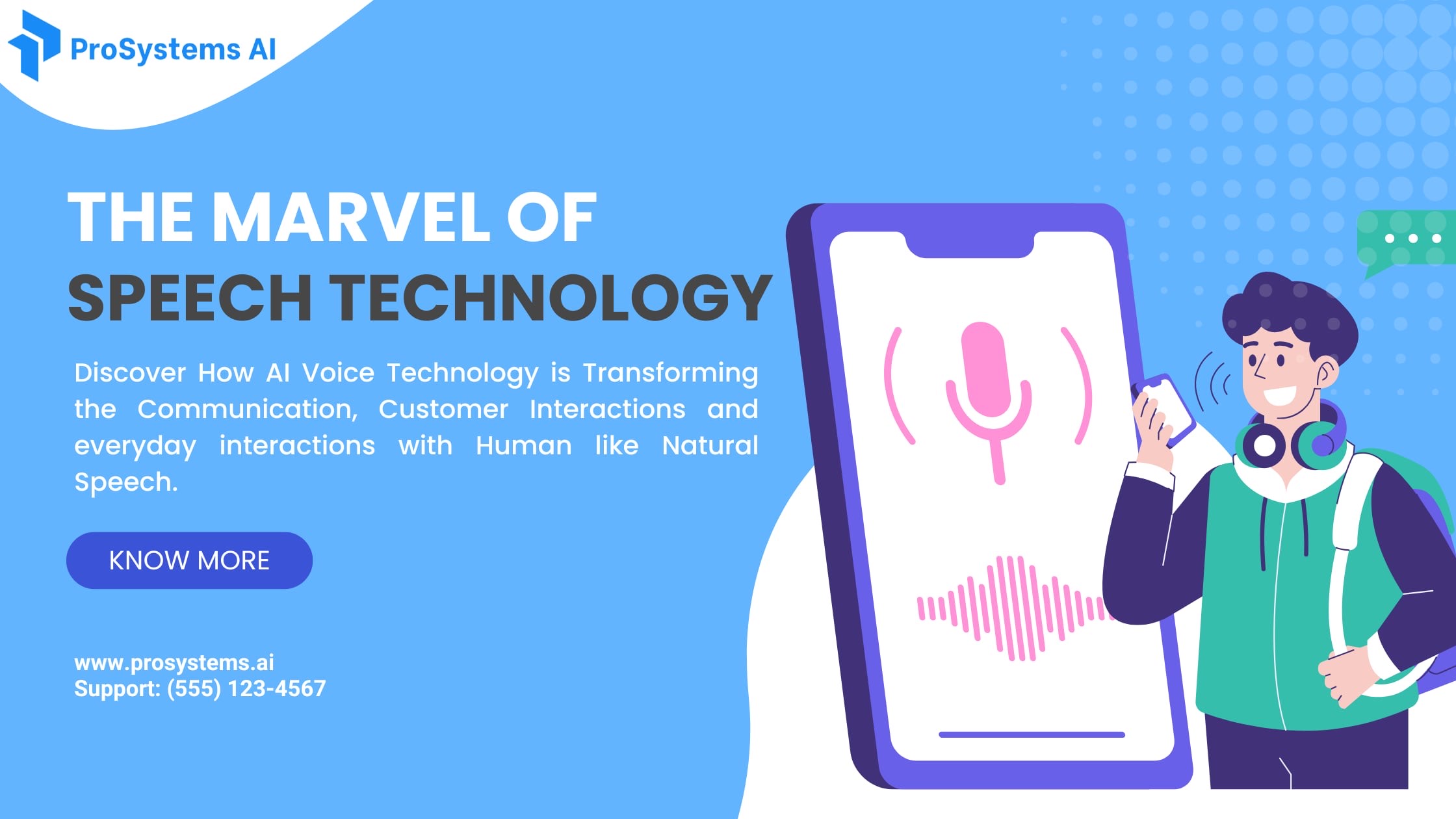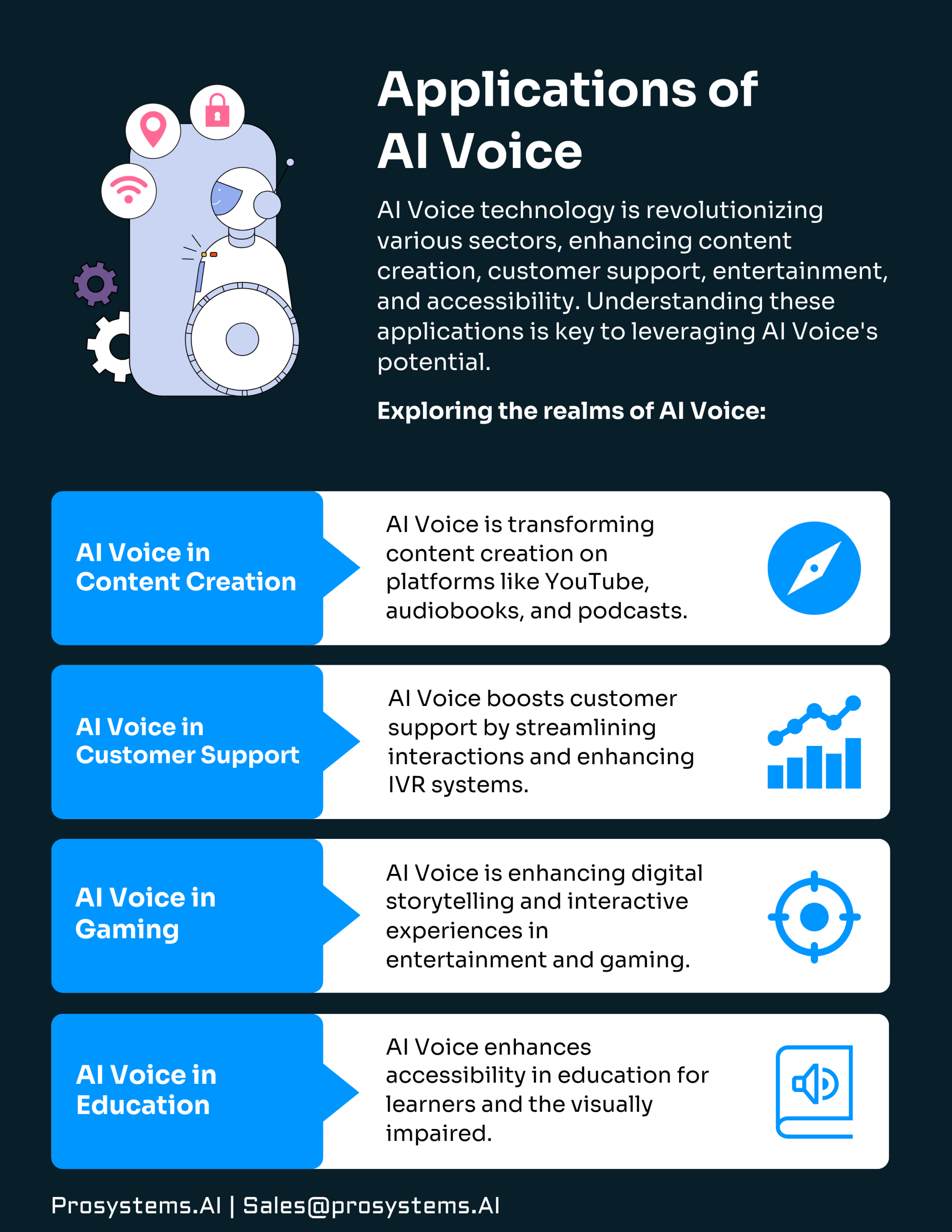
The world of communication is undergoing a remarkable transformation, driven by the rapid rise of AI voice technology.
From smart home devices to cutting-edge customer service solutions, speech technology is redefining how we interact with machines and each other.
Powered by advances in natural language processing, machine learning, and voice synthesis, AI voice systems are creating faster, more natural, and more human-like conversations.
In this article, we’ll dive into the incredible journey of AI voice, its growing impact across industries, and why it’s considered one of the most exciting innovations of our time.
What is an AI voice?
An AI voice (also known as AI generated voice) is a technology that enables machines to generate lifelike speech, replicating human-like tones and intonations.
Using artificial intelligence, deep learning, and text-to-speech (TTS) models, AI can transform written text into natural-sounding audio. Neural networks further enhance this process, ensuring smoother, more realistic speech that closely mimics human conversation.
The Evolution of AI Voice
AI-generated speech has come a long way, transforming from stiff, robotic tones to highly realistic, expressive voices. Here’s a brief timeline of its development:
- 1950s–1970s: The first rule-based speech synthesis systems appeared, including IBM’s “Shoebox” and Noriko Umeda’s TTS model. Early voices sounded artificial and mechanical.
- 1980s–1990s: Concatenative synthesis improved speech quality by stitching together recorded sound fragments, leading to advancements in Apple’s Macintosh TTS and AT&T’s speech tech.
- 2000s–2010s: Deep learning and neural networks revolutionized AI voice. Google’s WaveNet and voice assistants like Alexa and Google Assistant introduced more natural, dynamic speech.
- 2020s–Present: AI voice cloning, customizable speech synthesis, and ultra-realistic AI-generated voices from companies like OpenAI, ElevenLabs, and Resemble AI have blurred the line between synthetic and human speech.
As AI voice continues to advance, expect even more lifelike and emotionally expressive speech, transforming industries like customer service, content creation, and accessibility.
How Does AI Voice Work?
AI voice technology transforms written text into lifelike speech using advanced machine learning and neural networks. Here’s a breakdown of the process:
- Text Analysis: The AI scans the text, breaking it down into phonetic components while analyzing punctuation and sentence flow to ensure natural delivery.
- Linguistic & Acoustic Processing: Deep learning models predict tone, pitch, and rhythm, making the speech sound more fluid and expressive. Neural networks, like Google’s WaveNet, enhance voice quality by mimicking human intonations.
- Speech Synthesis (TTS): The processed text is converted into speech using text-to-speech (TTS) technology. This can involve assembling pre-recorded voice fragments or generating speech from scratch with AI.
- Voice Customization & Cloning: AI can replicate real voices, modify accents, or adjust emotional tones to match different contexts and user preferences.
- Adaptive Learning: Advanced AI voices can respond dynamically to real-time inputs, making them more interactive and natural in conversation.
From virtual assistants and audiobooks to customer service and content creation, AI-generated voices are reshaping the way we communicate with technology.
Applications of AI-Generated Voice Technology
AI Voice in Content Creation: Transforming YouTube, Audiobooks, and Podcasts
AI-generated voices are revolutionizing digital content by delivering natural-sounding voice-overs quickly and affordably. Here’s how AI voice technology is reshaping the industry:
- YouTube Videos: Creators use AI voice-overs for explainer videos, tutorials, and automated content, eliminating the need for expensive voice actors while maintaining high-quality narration.
- Audiobooks: AI-powered narration speeds up audiobook production, offering lifelike voices with customizable accents, tones, and pacing—making books more accessible and scalable.
- Podcasts: AI-generated voices help automate episode narration, generate distinct speaker styles, and even provide multilingual versions, expanding audience reach without additional recording time.
Thanks to advancements in machine learning and text-to-speech (TTS) models, AI voices are now more expressive, adaptable, and cost-effective, changing the way content is created and consumed.
AI Voice in Customer Support & IVR Systems
Businesses are transforming customer service with AI-generated voice technology, making automated interactions more natural and efficient.
Interactive Voice Response (IVR) systems powered by AI provide seamless, round-the-clock support, improving both customer experience and operational efficiency.
- Always Available, Zero Hold Time: AI-driven IVR systems handle calls 24/7, answering common questions, processing requests, and directing customers to the right department without long wait times.
- More Human-Like Interactions: Unlike outdated robotic IVR menus, AI-generated voices sound natural and dynamic, adjusting tone and responses based on customer intent for a smoother experience.
- Cost Savings & Higher Efficiency: Automating customer support with AI voice technology reduces staffing costs while handling a high volume of inquiries faster than human agents.
From e-commerce to healthcare, AI-powered voice solutions are streamlining customer interactions, reducing costs, and enhancing support quality like never before.
AI Voice in Entertainment & Gaming: The Future of Digital Storytelling
AI-generated voices are transforming entertainment and gaming, creating more immersive and interactive experiences.
From dynamic game characters to realistic narration, AI voice technology is reshaping how audiences engage with digital content.
Gaming: Bringing Virtual Characters to Life
- AI-powered voices give NPCs natural speech patterns, making interactions feel more lifelike.
- Real-time voice synthesis allows for adaptive dialogue, responding instantly to player choices.
- AI voice cloning maintains character consistency across different languages and updates.
Entertainment: AI-Driven Narration & Voice Acting
- AI-generated voiceovers enhance audiobooks, animations, and promotional videos, cutting production costs and time.
- Customizable AI voices adjust tone, emotion, and style, offering greater flexibility for content creators.
As AI voice technology evolves, expect even more expressive and human-like voices, revolutionizing storytelling in games, movies, and digital media.
AI Voice in Accessibility & Education: Bridging the Gap for Learners & the Visually Impaired
AI-generated voices are revolutionizing accessibility and education, offering innovative solutions for visually impaired individuals and language learners. This technology transforms text into natural-sounding speech, making information more accessible and engaging.
Empowering the Visually Impaired
- AI-driven text-to-speech (TTS) allows users to listen to books, articles, and digital content instead of reading.
- Voice-enabled assistants help with hands-free navigation, making technology more user-friendly.
Enhancing Education & Language Learning
- AI-powered voices provide real-time language translation and pronunciation guidance for language learners.
- Interactive AI tutors create personalized learning experiences, adapting tone and pacing based on student needs.
- Digital platforms leverage AI narration to make audiobooks and e-learning content more immersive.
As AI voice technology advances, it is breaking barriers in education and accessibility, ensuring that learning is more inclusive, engaging, and widely available to all.

AI Voice Ethics & Regulation: Addressing Challenges in a Digital Era
AI-generated voices are transforming industries, but with innovation comes ethical dilemmas and regulatory concerns. As AI voice technology becomes more sophisticated, responsible usage and clear guidelines are essential to prevent misuse.
The Threat of Deepfake Audio & Misinformation
AI-powered voices can replicate human speech with astonishing accuracy, making them susceptible to misuse in fraud, political manipulation, and misinformation campaigns. Without safeguards, deepfake audio could erode trust in digital communication.
Impact on Jobs & Human Labor
The rise of AI voice assistants, automated call centers, and AI-generated narrations is reshaping the job market. While businesses benefit from cost-cutting automation, voice actors, customer service representatives, and other professionals face job displacement as AI takes over.
Emerging Regulations for AI Voice
Governments and tech leaders are taking steps to regulate AI-generated voices to ensure responsible usage:
- EU AI Act: Establishes transparency rules for deepfake detection and ethical AI practices.
- U.S. AI Disclosure Laws: Pushes for AI-generated content to be clearly labeled.
- Industry Standards: Companies like Google and OpenAI are working on ethical AI voice policies to prevent exploitation.
The Future of AI Voice Technology
AI voice technology is advancing at an extraordinary rate, transforming the way we interact with machines.
With improvements in deep learning, neural networks, and natural language processing (NLP), AI-generated voices are becoming more lifelike, adaptive, and useful across various industries.
Emotionally Intelligent & Context-Aware Voices
Future AI voices will do more than just mimic speech—they’ll convey emotions, adjust their tone based on context, and respond dynamically in real time. This will enhance virtual assistants, customer service bots, and even storytelling in entertainment.
Breaking Language Barriers with Real-Time Translation
AI-powered voice technology will revolutionize global communication by enabling instant, accurate translations across multiple languages. This will benefit businesses, travelers, educators, and anyone looking to connect across cultures effortlessly.
Personalized & Cloneable Voices
With advanced voice cloning, AI will allow businesses and individuals to create custom, unique voice identities. Whether for branding, virtual influencers, or audiobook narration, AI-generated voices will offer endless possibilities for personalization.
Interactive AI in Gaming & Virtual Worlds
Gaming and virtual reality will take immersion to the next level with AI-driven NPCs (non-playable characters) that can generate real-time dialogue. This will replace rigid, pre-recorded responses with fluid, unscripted interactions, making digital worlds more engaging.
AI Voices: The Sound of the Future
AI-generated voices are no longer a novelty—they are becoming a fundamental part of communication, business automation, accessibility, and entertainment. While human voices will always be irreplaceable in certain areas, AI will continue to expand possibilities, making interactions faster, smarter, and more efficient.
The future isn’t just automated—it’s talking, responding, and adapting in ways we’ve only begun to imagine.
Q&A:
Q: What is an AI voice generator?
A: An AI voice generator is a tool that transforms written text into realistic speech using artificial intelligence, deep learning, and text-to-speech (TTS) technology.
Q: How does an AI voice generator work?
A: It analyzes text input, applies machine learning models to mimic human speech patterns, and produces natural-sounding audio.
Q: What are some of the best AI voice generators?
A: Leading AI voice generators include Prosystems.AI, OpenAI’s TTS & Play.ht
Q: Can AI voice generators create different accents and emotions?
A: Yes! Advanced AI models can adjust pitch, tone, speed, and even inject emotion into speech for a more natural effect.
Q: What is an AI voice-over?
A: AI voice-over refers to artificially generated narration used in videos, audiobooks, e-learning materials, and commercials.
Q: How does AI voice-over compare to human narration?
A: AI voice-over is cost-effective, fast, and scalable, but human voice actors provide better emotional depth and nuanced performances.
Q: Who uses AI voice-over technology?
A: Content creators, audiobook publishers, e-learning platforms, marketers, and game developers are among the many industries utilizing AI voice-over.
Q: Will AI voice-over replace human narrators?
A: While AI continues to improve, human voice actors remain essential for performances requiring complex emotions and artistic interpretation.
